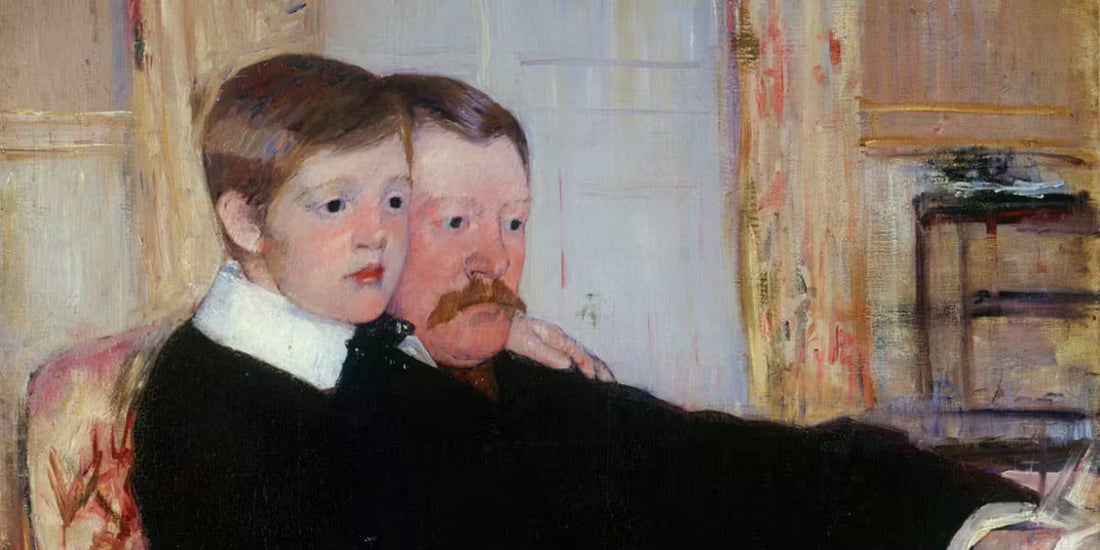In celebration of Father’s Day, we’re joining people around the world in honouring father figures everywhere. From the quiet strength of a devoted dad to the emotional complexity of single parenting, fatherhood takes many forms, and art has long served as a powerful lens through which to explore and honour these roles.
This month, we’re shining a light on some iconic artworks that capture the diverse experiences of fatherhood. These pieces are timeless reminders of the deep, meaningful bonds that exist between father and child and how they are portrayed in art.

Vincent van Gogh – First Steps, After Millet (1890)
We begin with Van Gogh’s First Steps, After Millet. Painted in 1890, this piece is a tribute both to fatherhood and to French artist Jean-François Millet, who originally sketched the scene. In the painting, a father reaches out as his child takes their first steps, a universal moment of trust, support, and connection.
In the painting, a father reaches out to his child, a simple, touching family moment. Van Gogh kept Millet’s original layout but added colour, sky, and space to give the scene warmth and energy. By leaving faces undefined, he made the moment feel universal and timeless.
 Paul Cézanne – The Artist’s Father, Reading “L’Événement” (1866)
Paul Cézanne – The Artist’s Father, Reading “L’Événement” (1866)
Next, we explore Cézanne’s The Artist’s Father, painted in 1866. This portrait offers a raw insight into a complex father-son relationship. With a stern expression and rigid posture, Cézanne’s father appears as an imposing figure, an image many can relate to, especially in an era when emotional expression from fathers was often restrained.

Rembrandt – The Return of the Prodigal Son (c. 1669)
Next we reflect on Rembrandt’s masterpiece The Return of the Prodigal Son. This powerful image captures a moment of deep forgiveness and love. The father embraces his lost son with open arms, embodying compassion and mercy.
Few artworks speak so clearly to the unconditional nature of a father’s love. Rembrandt’s painting transcends its biblical origins to offer a moving representation of reunion and emotional reconciliation.

Michelangelo – The Creation of Adam (1512)
One of the most iconic depictions of fatherhood in Western art history is Michelangelo’s iconic The Creation of Adam, found on the ceiling of the Sistine Chapel. In this dramatic moment, God, the ultimate father figure, reaches out to Adam.
This piece not only explores the beginning of humanity but also symbolises the divine connection between creator and creation, a strong metaphor for the father-child bond.
 Mary Cassatt – Alexander Cassatt and His Son, Robert (1884)
Mary Cassatt – Alexander Cassatt and His Son, Robert (1884)
Although Mary Cassatt is best known for her depictions of mothers with their children, she also painted several portraits of her brother, Alexander Cassatt, the president of the Philadelphia Railroad and an art collector. One particularly tender portrait, painted in 1884 during a visit to Paris, features Alexander with his son, Robert.
The painting captures a quiet, affectionate moment between father and child, an intimate expression of love from an artist celebrated for her sensitivity to human connection.
Through art, we’ve seen that fatherhood is anything but one-dimensional—it’s rich, complex, and uniquely experienced by everyone. Thank you for joining us in celebrating the many faces of fatherhood. Stay tuned for next month’s theme!

